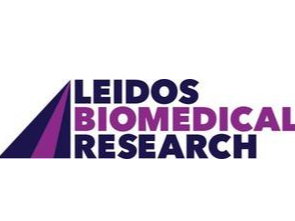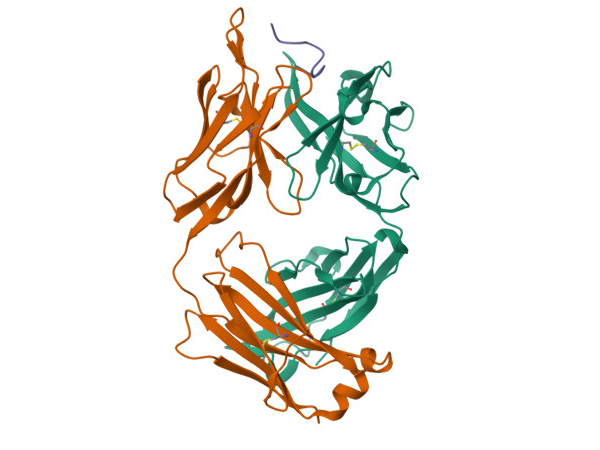Drug information
Not provided
CIS43LS
Not provided
Biotherapeutic
CIS43LS (VRC-MALMAB0100-00-AB) is a long-acting human IgG1 monoclonal antibody in clinical development for the prevention of P. falciparum malaria. The Fc region of CIS43LS contains two site-directed mutagenesis substitutions at amino acid residues N457S and M451L (termed “LS”) to extend its efficacy and half-life. CIS43 was originally isolated from a clinical trial participant inoculated with an attenuated P. falciparum whole-sporozoite vaccine, and functions by targeting the highly conserved junctional NPDP epitope of the P. falciparum circumsporozoite protein essential for hepatocyte infection and parasite motility. Recent studies have shown that a single dose of CIS43LS provides high levels of malarial prophylaxis for 8 weeks, and may offer additional protection for up to 6 months.
Unknown
Unknown
Therapeutic area(s)
- Malaria
- Pre-Exposure Prophylaxis (PrEP)
Administration route
Subcutaneous, Intravenous
Associated long-acting platforms
Monoclonal Antibody
Use of drug
- Administered by a nurse
- Administered by a specialty health worker
Not provided
Dosage
Not provided
Not provided
Not provided
Not provided
Not provided
Not provided
Associated technologies
Not provided
Comment & Information
Developer(s)

Leidos Biomedical Research, Inc. is a research company that operates the Frederick National Laboratory for Cancer Research on behalf of the National Cancer Institute. Based in Frederick, Maryland, the laboratory develops technological solutions for HIV/AIDs, emerging infectious diseases and oncology, in addition to providing scientific support to several national institutes including the NIAID.
Drug structure
Scale-up and manufacturing prospects
Manufacturing requirements and production scale-up for therapeutic monoclonal antibodies (mAbs) is primarily focused on pharmacokinetic suitability, formulation stability and overall maintenance of product quality. In addition, industrial bioprocessing steps can introduce further challenges regarding mAb formulation viscosity and aggregation propensity.
Industrial bioreactor vessel with a production volume capacity of between 5-25kL. Continuous disc stack centrifuges for bioreactor harvesting with subsequent membrane and depth filtration for supernatant clarification. Recombinant protein-A chromatography or other suitable affinity capture apparatus followed by two chromatographic polishing steps such as cation- and anion-exchange. Ultrafiltration membrane system to concentrate and formulate the final product.
MAbs are highly dependent on their structural, chemical and conformational stability for biological activity. Chemical degradation of mAbs during manufacture can lead to the generation of product variants and complex impurity profiles resulting from a wide range of processes, including: N-linked glycosylation, isomerisation, fragmentation, deamidation, oxidation and C-terminal lysine clipping. Additionally prior to packaging, the final product requires close monitoring for the presence of residual contaminants such as endotoxins and pro-inflammatory peptidoglycans.
Formulation characterisation steps for therapeutic mAb products include (but are not limited to): (1) Identification of post-translational modifications using ion-exchange chromatography and capillary isoelectric focusing, (2) Measurement of concentration dependent aggregation rates via thermal differential scanning calorimetry, sub-visible particle quantitation and size-exclusion chromatography, and (3) Antibody clipping and fragmentation detection by capillary electrophoresis.
Excipients
Not provided
Not provided
Not provided
Delivery device(s)
No delivery device
There are either no relevant patents or these were not yet submitted to LAPaL
Publications
Kisalu NK, Pereira LD, Ernste K, Flores-Garcia Y, Idris AH, Asokan M, Dillon M, MacDonald S, Shi W, Chen X, Pegu A, Schön A, Zavala F, Balazs AB, Francica JR, Seder RA. Enhancing durability of CIS43 monoclonal antibody by Fc mutation or AAV delivery for malaria prevention. JCI Insight. 2021 Feb 8;6(3):e143958. DOI: 10.1172/jci.insight.143958. PMID: 33332286; PMCID: PMC7934869.
CIS43 is a potent neutralizing human mAb that targets a highly conserved “junctional” epitope in the Plasmodium falciparum (Pf) circumsporozoite protein (PfCSP). Enhancing the durability of CIS43 in vivo will be important for clinical translation. Here, 2 approaches were used to improve the durability of CIS43 in vivo while maintaining potent neutralization. First, the Fc domain was modified with the LS mutations (CIS43LS) to increase CIS43 binding affinity for the neonatal Fc receptor (FcRn). CIS43LS and CIS43 showed comparable in vivo protective efficacy. CIS43LS had 9- to 13-fold increased binding affinity for human (6.2 nM versus 54.2 nM) and rhesus (25.1 nM versus 325.8 nM) FcRn at endosomal pH 6.0 compared with CIS43. Importantly, the half-life of CIS43LS in rhesus macaques increased from 22 days to 39 days compared with CIS43. The second approach for sustaining antibody levels of CIS43 in vivo is through adeno-associated virus (AAV) expression. Mice administered once with AAV-expressing CIS43 had sustained antibody levels of approximately 300 μg/mL and mediated protection against sequential malaria challenges up to 36 weeks. Based on these data, CIS43LS has advanced to phase I clinical trials, and AAV delivery provides a potential next-generation approach for malaria prevention.
Additional documents
No documents were uploaded
Useful links
There are no additional links
Collaborate for development
Consider on a case by case basis, collaborating on developing long acting products with potential significant public health impact, especially for low- and middle-income countries (LMICs), utilising the referred to long-acting technology
Share technical information for match-making assessment
Provide necessary technical information to a potential partner, under confidentiality agreement, to enable preliminary assessment of whether specific medicines of public health importance in LMICs might be compatible with the referred to long-acting technology to achieve a public health benefit
Work with MPP to expand access in LMICs
In the event that a product using the referred to long-acting technology is successfully developed, the technology IP holder(s) will work with the Medicines Patent Pool towards putting in place the most appropriate strategy for timely and affordable access in low and middle-income countries, including through licensing
